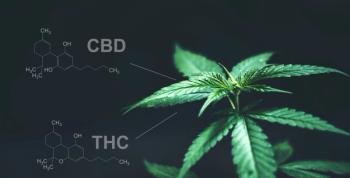
- March/April 2022
- Volume 3
- Issue 1
- Pages: 8-11
Chronic Pain: Data Snapshot
Here, Tetragram shares an overview of some of the top four areas users reported on related to pain to see what type of products they are finding useful, how they are consuming it, and more.
Chronic pain can be a symptom for many patients with various illnesses. On their website, Johns Hopkins Medicine defines chronic pain as long standing pain that persists beyond the usual recovery period or occurs along with a chronic health condition. Otha Smith’s Tetragram mobile app allows users to anonymously track cannabis products as well as the conditions or symptoms they are using it for. In their most recent collection of data, users reported muscle pain, joint paint, nerve pain, muscle spasms, injury pain, headache, migraine, abdominal pain, chronic back pain, surgical pain, and more. Here, Tetragam allows us to share an overview of some of the top four areas patients reported on related to pain to see what type of products they are finding useful to help manage their pain, how they are consuming it, and more. This data relates to patients that reported muscle pain, joint pain, nerve pain, and injury pain. Some data highlights from this set include:
- Inhalation is still the most popular consumption method among consumers with an average of 83.35% across all four symptoms reported here.
- The average consumer is still not completely satisfied or experiencing symptom relief with an average of 35.58% of users responding with a score of 5 for the overall rating in these four symptom categories.
Muscle Pain
Patients who selected muscle pain as their primary symptom equaled 1729 sessions. Of those sessions, 32.79 reported using THC, 17.13 reported THCA, 8 reported CBD, 4.83 reported THCV, 2.9 reported CBDA, and 0.13 reported CBDV in their product.
Joint Pain
Patients who selected joint pain as their primary symptom equaled 1503 sessions. Of those sessions, 32.5 reported using THC, 16.67 reported THCA, 8.62 reported CBD, 3.99 reported THCV, 2.84 reported CBDA, and 0.06 reported CBDV in their product.
Nerve Pain
Patients who selected nerve pain as their primary symptom equaled 977 sessions. Of those sessions, 32.9 reported using THC, 16.21 reported THCA, 9.72 reported CBD, 5.02 reported THCV, 2.79 reported CBDA, and 0.03 reported CBDV in their product.
Injury Pain
Patients who selected injury pain as their primary symptom equaled 688 sessions. Of those sessions, 33.79 reported using THC, 14.98 reported THCA, 7.19 reported CBD, 3.06 reported THCV, 1.7 reported CBDA, and 0.15 reported CBDV in their product.
Articles in this issue
over 3 years ago
March/April 2022 Digital Editionover 3 years ago
Overview of Research on Cannabis for Chronic Painover 3 years ago
Finding Relief with Cannabisover 3 years ago
Eyewitness: Cannabis Should Be the Chronic Pain Treatment Choiceover 3 years ago
Chronic Pain Advocacy: It’s Time to Testify!Newsletter
Unlock the latest breakthroughs in cannabis science—subscribe now to get expert insights, research, and industry updates delivered to your inbox.




